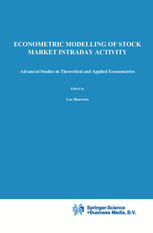

Most ebook files are in PDF format, so you can easily read them using various software such as Foxit Reader or directly on the Google Chrome browser.
Some ebook files are released by publishers in other formats such as .awz, .mobi, .epub, .fb2, etc. You may need to install specific software to read these formats on mobile/PC, such as Calibre.
Please read the tutorial at this link: https://ebookbell.com/faq
We offer FREE conversion to the popular formats you request; however, this may take some time. Therefore, right after payment, please email us, and we will try to provide the service as quickly as possible.
For some exceptional file formats or broken links (if any), please refrain from opening any disputes. Instead, email us first, and we will try to assist within a maximum of 6 hours.
EbookBell Team

4.4
52 reviewsOver the past 25 years, applied econometrics has undergone tremen dous changes, with active developments in fields of research such as time series, labor econometrics, financial econometrics and simulation based methods. Time series analysis has been an active field of research since the seminal work by Box and Jenkins (1976), who introduced a gen eral framework in which time series can be analyzed. In the world of financial econometrics and the application of time series techniques, the ARCH model of Engle (1982) has shifted the focus from the modelling of the process in itself to the modelling of the volatility of the process. In less than 15 years, it has become one of the most successful fields of 1 applied econometric research with hundreds of published papers. As an alternative to the ARCH modelling of the volatility, Taylor (1986) intro duced the stochastic volatility model, whose features are quite similar to the ARCH specification but which involves an unobserved or latent component for the volatility. While being more difficult to estimate than usual GARCH models, stochastic volatility models have found numerous applications in the modelling of volatility and more particularly in the econometric part of option pricing formulas. Although modelling volatil ity is one of the best known examples of applied financial econometrics, other topics (factor models, present value relationships, term structure 2 models) were also successfully tackled.